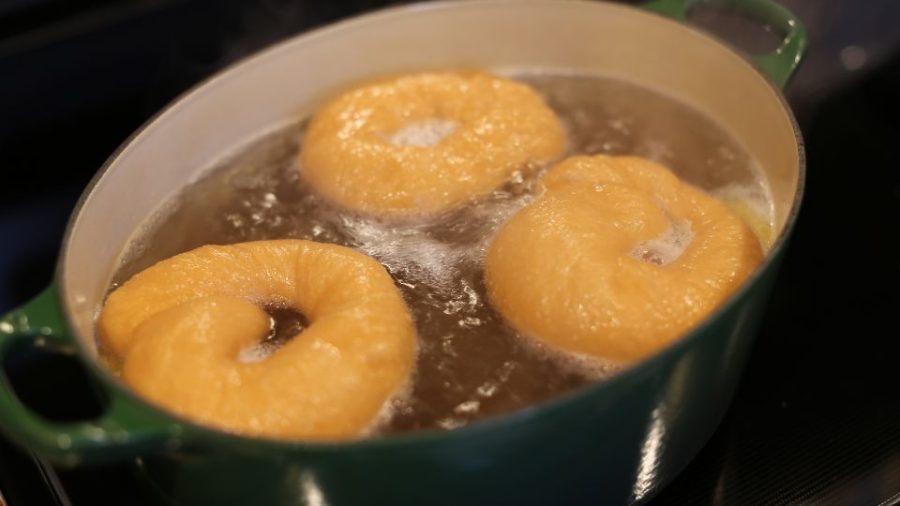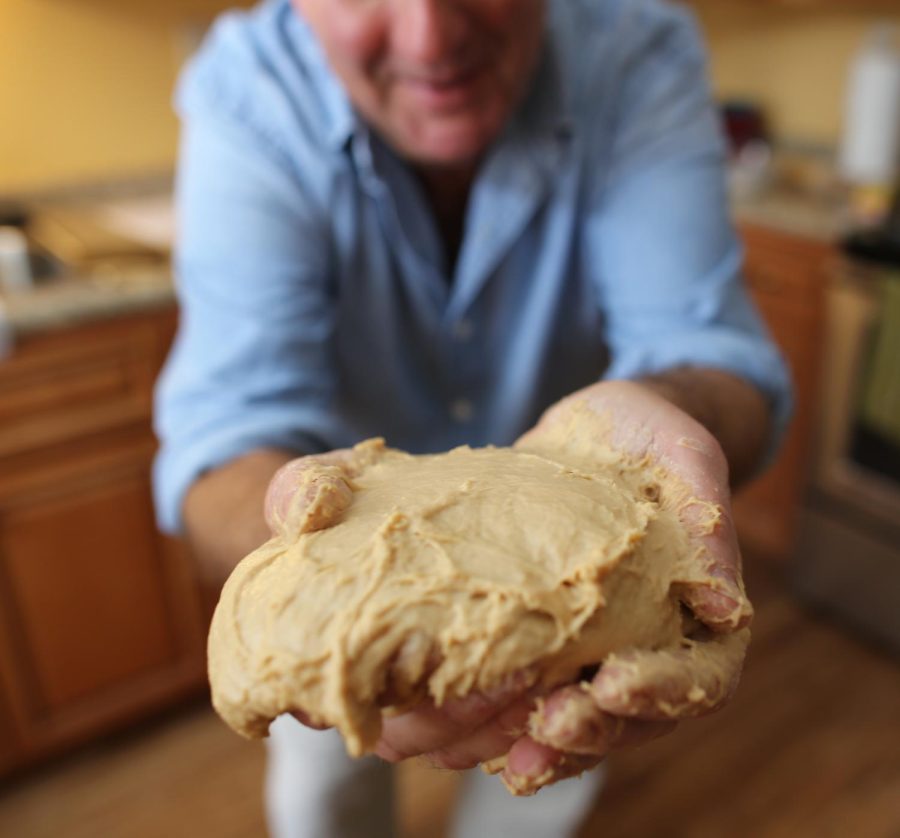How to make New York style bagels in your St. Louis kitchen
Published January 18, 2023
There’s nothing quite like the smell—and taste—of a hot bagel. Ideally with cream cheese and lox. Maybe, with cardiologist approval, a schmear of butter or schmaltz. Finding a fresh-out-of-the-oven bagel may prove challenging, but one viable option is to make them yourself. Baking legitimate New York-style water bagels in a home kitchen is easy.
Warm bagels still bring back memories of my childhood. Like many Jewish St. Louisans who grew up in and around University City, I recall my dad parking on Eastgate Avenue just north of Delmar Boulevard and walking around to the backdoor of Pratzel’s Bakery. He chatted up the night crew and emerged with a sack of steaming bagels. Bob Daniel had the same experience with his father.
RELATED: The Ultimate Guide to St. Louis Homemade Bagels
ADVERTISEMENT
“On Saturday night, we’d watch ‘Wrestling At The Chase’ and then drive to the Loop,” said Daniel, 70, a member of Congregation Shaare Emeth. “They had already closed for the night. We parked in the alley and walked in the back door. These old Jewish men would be baking bagels while they were smoking cigars. Who knows how many cigar ashes fell in the dough, but they were great.”
A commercial kitchen like the one they had at Pratzel’s is great if you plan to bake thousands of bagels. If you just need a half dozen, you’ll find most of the ingredients in your pantry. Equipment is fairly basic, too, but you will need a stand mixer with a dough hook or a food processor. The latter is the dough mixing device of choice for Dayle Norber, who loves to cook bagels. Her first attempt was made during the pandemic.
“One night at like 2 a.m. I couldn’t sleep and I thought, ‘I’m going to get up and make some bagel dough,’” said Norber, 70. “So I mixed everything in the food processor and put it in the refrigerator. And in the morning, I boiled them for not very long and baked them for 20 or 25 minutes, and they were ready, and it was awesome.”
Norber, who also belongs to Shaare Emeth, said bagel-baking is worth the effort.
“The texture is different from what you get from grocery store bagels,” she said. “When you make them yourself, and go through the boil and bake, you get a bagel that’s a little denser and chewy.”
ADVERTISEMENT
That’s because of the gluten in the flour. Gluten is the protein that gives dough its elasticity. It acts as a web to hold the carbon dioxide released by the yeast and give the bagel its shape. The pre-bake boiling process also creates chewiness unique to bagels. Another key ingredient is malt which gives bagels a rich brown color and unique smell.
Besides flour, yeast, salt, baking powder and malt syrup or diastatic malt powder, your only other critical decision is how to flavor the bagel.
“I usually do sesame, poppy, and then I make my own ‘everything blend’ because I don’t like it too salty,” Norber said. “That’s why I add more poppy seeds and sesame seeds and then the polenta. Sometimes I put caraway in the bagel dough because the caraway adds some depth of flavor. I usually mix some polenta cornmeal and try and get some polenta cornmeal on the bottom just to give them a little more crunch.”
If you’re craving hot bagels, Norber said, the process is simple.
“It requires a little bit of planning and shopping, and you need to have the time,” she said. “But I think they’re a lot of fun. It would actually be a really fun party if you would invite people over, have the bagel dough ready, and let everyone make their own bagel. Wouldn’t that be so cool?”
While the cooking time is short (30 seconds in boiling water and a 20-minute bake), you’ll need to factor in a minimum 90-minute rise after mixing the dough. An excellent bagel recipe is available here from King Arthur Baking. A step-by-step guide to shaping bagels can be found here.
Tips: In the “Motchan Test Kitchen,” we found the bagels on the rack on the lower half of the oven cooked quickly, so it’s best to check for doneness starting at about 12-15 minutes into the bake. Also, we recommend against parchment paper as it can begin to scorch at a high oven temperature.

















